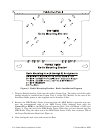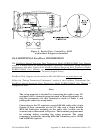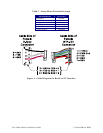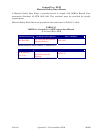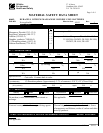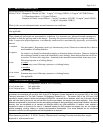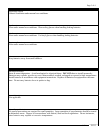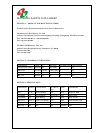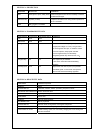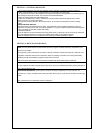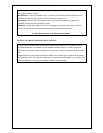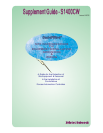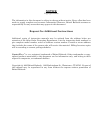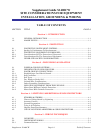
Page 4 of 4
H. — EMERGENCY PROCEDURES
Steps to be taken if material is released to the environment or spilled in the work area
Evacuate the area and allow vapors to dissipate. Increase ventilation. Avoid eye or skin contact. DO NOT
inhale vapors. Clean-up personnel should wear appropriate protective gear. Remove spilled liquid with
absorbent and contain for disposal.
Fire and Explosion Hazard Extinguishing Media
Batteries may burst and release hazardous decomposition products when
exposed to a fire situation. See Sec. C.
As for surrounding area. Dry
chemical, alcohol foam, water or
carbon dioxide. For incipient
fires, carbon dioxide extinguishers
are more effective than water.
Firefighting Procedures
Cool fire-exposed batteries and adjacent structures with water spray from a distance. Use self-contained
breathing apparatus and full protective gear.
I. — FIRST AID AND MEDICAL EMERGENCY PROCEDURES
Eyes
Not anticipated. If battery is leaking and material contacts eyes, flush with copious amounts of clear, tepid
water for 30 minutes. Contact physician at once.
Skin
Not anticipated. If battery is leaking, irrigate exposed skin with copious amounts of clear, tepid water for a
least 15 minutes. If irritation, injury or pain persists, consult a physician.
Inhalation
Not anticipated. Respiratory (and eye) irritation may occur if fumes are released due to heat or an abundance
of leaking batteries. Remove to fresh air. Contact physician if irritation persists.
Ingestion
Consult a physician. Published reports recommend removal from the esophagus be done endoscopically
(under direct visualization). Batteries beyond the esophagus need not be retrieved unless there are signs of
injury to the GI tract or a large diameter battery fails to pass the pylorus. If asymptomatic, follow-up x-rays
are necessary only to confirm passage of larger batteries. Confirmation by stool inspection is preferable
under most circumstances. If mouth area irritation/burning has occurred, rinse the mouth and surrounding
area with clear, tepid water for at least 15 minutes.
Notes to Physician
1) For information on treatment, telephone (202)-625-3333 collect.
2) Potential leakage of less than 50 milligrams of propylene carbonate (CAS #108-32-1) and
dimethoxyethane (CAS #110-71-4).
3) Dimethoxyethane readily evaporates.
4) Under certain misuse conditions and by abusively opening the battery, exposed lithium can react with
water or moisture in the air causing potential thermal burns or fire hazard.
Replaces # 1461
The information contained in the Material Safety Data Sheet is based on data considered to be accurate, however, no warranty is
expressed or implied regarding the accuracy of the data or the results to be obtained from the use thereof.
MSDS-4 (8/95) GMEL#
2033.3



